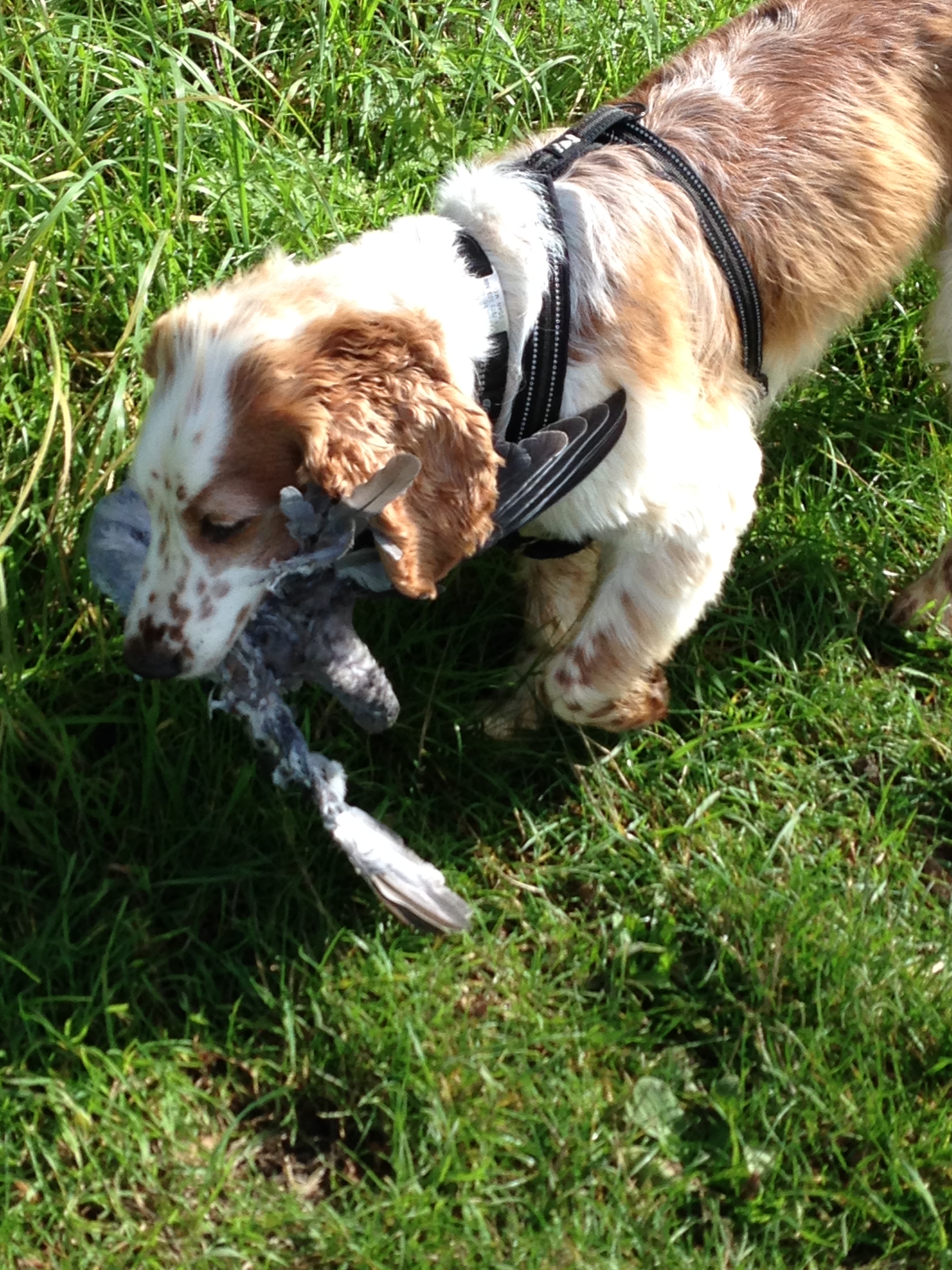Benefits of Feeding Dogs Raw Food

The benefits of raw feeding dogs can be seen in both the health and the behaviour of the dog, as follows.
Health
Skin and coat health is visually improved due to fats and oils from a natural source. Persistent skin problems disappear or improve.
Dental and oral health is considerably improved if bones are offered, due to the mechanical action of chewing and tearing removing tartar and therefore bacteria build-up. Gum disease can also lead to heart problems. Over time a regular diet of ground food (i.e. Kibble) can cause plaque and tartar to build up on the teeth, causing gum disease and a myriad of health problems.
Gut health – raw food is suited to dogs that suffer with food intolerances, sensitive stomach and allergies. Raw is naturally ‘hypoallergenic’ because there are no additives in a raw diet. Feeding raw can remove ‘sensitive stomach’ which is a side effect of a gut that is out of practice after long term kibble. Raw feeding promotes gut health and flexibility.
Improved digestion – the time it takes to gnaw away at whole meaty bones gives the gut time to activate its gastric juices so when the food hits the stomach it has a much better chance of being properly digested. Feeding commercial food encourages gulping (as it requires no effort or time to consume) so it arrives rapidly into the dog’s stomach, before the necessary digestive acids have been fully excreted, resulting in poorly digested meals.
Stronger immune system – a raw diet normalises and strengthens the immune system. Because raw meat and bone contain a good balance of essential fatty acids and other immune normalising and strengthening nutrients, it reduces inflammatory conditions and eliminates infections.
Faeces are firmer, dryer and easier to manage, as well as having a low odour. There is less waste (approx. 1/5th) due to most of the food being bio-available and fewer fillers. The firmness of the faeces aids the emptying of the anal sacs.
Weight – a high protein raw food diet maintains lean body mass and manages weight. Raw feeding keeps the metabolism at a steady rate, so the food doesn’t ‘rush through’ the system.
Adjustability – raw feeding is easy to adjust dependent on health, life stage and behaviour. Supplementation is possible by adding a natural source rather than buying special food or using expensive supplements.
Glycaemic Index – this is more balanced in raw fed dogs. A protein rich diet is absorbed slowly by the body, avoiding peaks and troughs of insulin levels associated with carbohydrate based diets. Diabetes is less frequently seen, along with circulatory issues, blindness, poor concentration and volatile mood.
Longevity is improved – the organs don’t deteriorate as quickly as they are not put under pressure to produce amylase, insulin, etc. in excess. The immune system is healthy so pathogens are kept at bay.
Arthritis - the onset of arthritis and joint issues are prevented and assisted through the presence of chondroitin and minerals essential to healthy bones as standard.
Mental acuity – the deterioration is delayed due to the presence of good quality essential fatty acids and an abundance of neurotransmitters.
Muscles – ripping and chewing raw meaty bones develops the neck, jaw and shoulder muscles of dogs.
Ear infections tend to reduce as there is less sugar in a raw diet to feed yeast.
Raw food contains 75-80% water, which is vital for proper digestion and could possibly decrease the risk of bloat and calcium oxalate bladder stones.
Nutrition
Nutrition is improved due to the lack of cooking, heating and processing – none of the nutrients (amino acids, pro and prebiotics, minerals, essential fatty acids, enzymes, bioflavonoids, anthocyanins, antioxidants, micro-electrical tensions) are compromised.
Vitamins in dry dog food tend to be synthetic and so not as beneficial to the dog – natural vitamins in the raw ingredients are frequently destroyed by air and heating, so synthetic vitamins are added back in to make the food complete.
Digestive enzymes are destroyed by heat used in the manufacture of kibble
Fatty acids can become rancid during the production of kibble, leading to commercial food being high in Omega 6 (the inflammatory fatty acid) and low in Omega 3.
Nutrients in raw food exist in highly complex structures that work best in the whole, not as individual components. All the vitamins and minerals are in their natural form, thousands of different enzymes and a full range of antioxidants.
Feeding a raw bone provides minerals in a perfectly balanced, bio-available way, with a super absorption rate.
Behaviour
Increased level of hormones, neurotransmitters, peptides and enzymes, and increased efficiency in vitamin conversion due to the correct pH in the body and a strong active gut.
The action of chewing boosts endorphin production and allows for relaxation and even mood.
Increase stimulation – tackling large raw meaty bones provides general satisfaction, increased vitality and quality of life. Feeding raw gives dogs the opportunity to really get a mentally stimulating experience as it takes a lot more mental and physical work for a dog to rip and tear meat off and crunch through bones and they often have to stop and work out exactly how to tackle the bone.
When eating raw food, dogs are engaging in a very primal and instinctual activity. Because the dog is receiving so much mental and physical exercise during meal times, they will be more satisfied and less likely to engage in destruction behaviours out of boredom.
Dry food fuels poor behaviour in three ways:
It is high in easily digested carbohydrates, which fuel high blood sugar and insulin levels, long linked to poor behaviour.
It is full of chemicals
It has a low vitamin B content (the mind soothing vitamins), and the B vitamins are very sensitive to long storage times.
Behavioural issues that could be helped are:
Chewing – is the dog trying out items to see if they supply nutrients that are missing from the food?
Digging – excessive digging in the garden could be due to the dog looking for nutrients in the soil.
Food theft – is the dog constantly hungry or lacking in nutrients from their own food?
Jumping up – in the canine world, jumping up can induce vomiting / regurgitation of food.
Hyperactivity – a diet full of chemicals, flavourings, additives and colourings can lead to an increase in negative energy in a dog.
Coprophagia – the dog could be eating poo to try to obtain digestive enzymes and other nutrients that they are missing in their diet.
